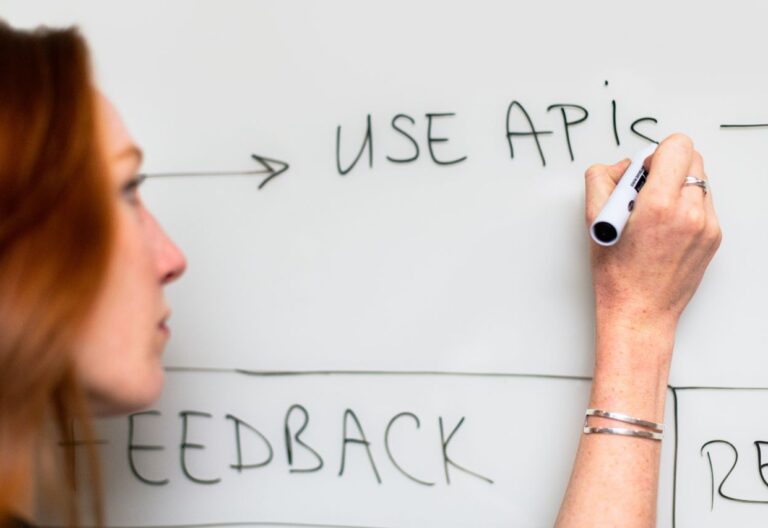When creating web services, there are two main approaches: Simple Object Access Protocol (SOAP) and Representational State Transfer (REST). They are two of the most popular application programming interfaces (APIs). While both allow a client to request data from a server, SOAP and REST significantly differ in their design and implementation.
Let’s compare SOAP vs REST API by exploring their fundamental differences, advantages, and disadvantages. Understanding the differences between SOAP and REST will help you develop a better sense of when to use each. It will also help you choose a fax API service that best suits your needs.
Table of Contents

What is SOAP?
A web API allows two computer systems to communicate over a network. A server or a client can offer the API, like a web browser. When the server provides an API, it is called a web service. There are two main ways to design a web service: SOAP and REST.
SOAP is a way for different computer systems to communicate with each other and exchange information. It uses a standardized format called XML to send messages between the systems. This allows the systems to understand each other, even if they are built using different programming languages and run on different operating systems.
Think of SOAP as sending a letter to a friend. The letter has a specific format and structure, such as a heading, an address, and a message. The letter also has rules for how it should be processed, such as where it should be delivered and how the reader should open it. Similarly, SOAP provides a standardized format and rules for exchanging information between computer systems.
What is REST?
REST, which stands for Representational State Transfer, is a standard architectural style for building web services. In simple terms, it’s a way of creating a communication system between different software systems over the Internet. When you make a RESTful API, you create rules for how the various systems should interact.
Think of REST as if you were calling a friend on the phone. You pick up the phone, dial their number, and then talk to them. You don’t need to worry about how you are communicating because those rules have already been established. Similarly, REST provides a set of rules for how systems should communicate over the Internet.
REST is a popular way of building APIs because it’s flexible and scalable and uses standards already widely adopted on the web (such as HTTP and URLs).
Comparing SOAP vs REST API: Key Differences
While SOAP and REST both allow for communication between different software systems, they differ in several ways:
Message format
SOAP uses XML as its message format, while REST can use XML, JSON, or other formats. JSON is typically used for REST because it is lightweight and easier to read. When used, SOAP requires a longer setup process than REST.
Request and response handling
SOAP is a single request-response communication style, while REST can use multiple formats for requests and responses. For example, SOAP will always send data in an XML format, but REST can send data in JSON, plain text, HTML, and more.
Protocol
Protocols are rules and conventions that define how different systems should communicate. SOAP uses SOAP protocol, a group of specifications for exchanging information in a distributed environment. REST uses HTTP, the same protocol used by web browsers.
Data transmission
SOAP supports only document-style message exchange (one-way or request-response). In contrast, REST supports multiple message exchange styles such as one-way, request-response, and streaming. SOAP sends data in SOAP envelopes, while REST sends data in the body of an HTTP request.
Flexibility
One of the critical reasons why REST is considered more flexible than SOAP is that it allows for a broader range of data formats. While SOAP only uses XML, JSON, or other formats, REST can use XML. This means that REST is better suited to handle data that doesn’t fit well into an XML format, such as binary data or media files.
Error handling
SOAP has built-in error handling through specific codes and messages, making detecting and responding to mistakes easier for systems. REST uses HTTP status codes, such as 404 for resource not found and 500 for server-side error, to indicate error conditions. HTTP status codes provide a flexible and widely supported way of showing error conditions in REST.

Advantages and Disadvantages of SOAP and REST
SOAP and object access protocol REST have their strengths and weaknesses, and the choice between them depends on the project’s specific requirements. Here’s a breakdown of their advantages and disadvantages:
Advantages of SOAP
- SOAP is a well-defined protocol with clear standards and specifications. This makes it easier to implement and use, as developers clearly understand how you should use SOAP.
- SOAP has built-in error-handling mechanisms, making it easier to detect and respond to errors that occur during communication.
- SOAP includes built-in security features, such as encryption and authentication, making it well-suited for sensitive or high-security applications.
- SOAP is designed to be platform- and language-independent, making it easy to integrate with different systems.
Disadvantages of SOAP
- Compared to REST, a complex structure can make it harder to implement and maintain.
- SOAP has a larger overhead compared to REST which requires more data to be transmitted for each request.
- SOAP only supports XML as its data format, which can be limiting for applications that need to handle other data formats.
Advantages of REST
- REST has a simple and lightweight architecture, making it easier to implement and maintain than SOAP.
- REST can handle a broader range of data formats, including XML, JSON, and others, and is not limited to just XML like SOAP.
- REST has a more negligible overhead than SOAP and is typically faster due to its simple and lightweight architecture.
- REST is widely adopted and used by many websites and web applications, making integrating with other systems and technologies easier.
Disadvantages of REST
- REST does not have a well-defined set of standards and specifications like SOAP, which can lead to inconsistencies in implementation.
- REST relies on HTTP status codes to indicate error conditions, which can be less straightforward than SOAP’s built-in error handling.
When to Use SOAP and REST
SOAP and REST can both be used for a variety of use cases. The choice between SOAP and REST depends on the specific requirements of the project and their strengths and weaknesses. Both have their advantages and disadvantages, and the best choice will depend on the particular use case. Here are some general guidelines for when to use each:
Use SOAP when:
- You require a well-defined and predictable messaging structure. SOAP uses XML to encode its messages, providing a clear and standard format for data exchange.
- You need to integrate with existing systems that use SOAP. Using SOAP will make integration easier if you are connecting to legacy systems or other systems that only support SOAP.
Use REST when:
- You want to build a highly scalable and performant system. REST is lightweight and uses simple HTTP requests, making it fast and efficient.
- You need to access resources over the web. REST uses standard HTTP methods (such as GET, POST, PUT, and DELETE) to interact with resources, making it easy to consume REST APIs from web and mobile applications.
- You want to allow different clients to interact with your system using a variety of programming languages. REST is language-agnostic and can be consumed by any client that can make HTTP requests.
Use Cases of SOAP and REST API
Now that you know the critical differences between SOAP and REST, here are some common use cases for both SOAP and REST APIs.
Use cases for SOAP API
- Enterprise Application Integration (EAI): SOAP API can integrate different applications within an enterprise, such as CRM, ERP, and HR systems, to streamline business processes.
- B2B (business-to-business) Communication: SOAP API facilitates communication between two businesses by exchanging structured data transmission, such as orders, invoices, and shipping information.
- Web Services: SOAP API can implement and consume web services, which allow different systems to communicate over the internet.
- Healthcare Applications: SOAP API can integrate healthcare applications, such as electronic medical record systems, with each other and insurance providers to improve patient care.
Use cases for REST API
- Mobile Applications: REST API can build APIs for mobile applications, providing access to server-side resources and data to mobile devices.
- Microservices: REST API can build APIs for microservices, which are small, independently deployable services that you can combine into larger applications.
- Web Applications: REST API can build APIs for traditional web applications, allowing clients to retrieve and manipulate data stored on a server.
- Internet of Things (IoT): REST API can build APIs for IoT devices, allowing them to communicate with other devices and services over the internet.
- Online faxing: REST API can integrate online faxing services into applications, allowing documents to be sent and received via fax without needing a physical fax machine.

Faxing and API
By comparing SOAP vs Rest API, we can identify the differences between these two technologies in terms of different factors and use cases for each technology. Both SOAP and REST APIs can be beneficial for many kinds of applications. Online faxing is one excellent example that uses these technologies to exchange documents without needing physical fax hardware.
SOAP and REST APIs can connect to online faxing services to programmatically send and receive faxes. Online faxing services typically provide an API that developers can use to automate sending and receiving faxes. The API may support both SOAP and REST protocols or just one of them, depending on the transport protocol requirements of the application.
Developers can use the API to send faxes by providing the fax document and recipient information in their API request. They can also receive faxes by periodically checking for new faxes or setting up notifications to receive alerts when they arrive.
Experience Fax API Technology With iFax
If your application needs to integrate with an online faxing service, iFax is a leading provider of fax API solutions. Providing REST APIs, iFax enables developers to quickly and easily incorporate faxing capabilities into their applications. Our REST API allows customers to send and receive documents from any device or platform.
With iFax’s Fax API, you can speed up your development process, get real-time status updates, and securely send documents. Additionally, you can:
- Automate faxing processes with flexible workflows.
- Scale your business with an enterprise-ready platform.
- Customize faxing functionalities using programmable API endpoints.
- Ensure data security with 256-bit SSL encryption.
Whether you need to exchange documents between businesses or automate document exchange within your applications, SOAP and REST APIs can help facilitate the data exchange process. Experience the power of the iFax API for online faxing. Request a free demo today.







